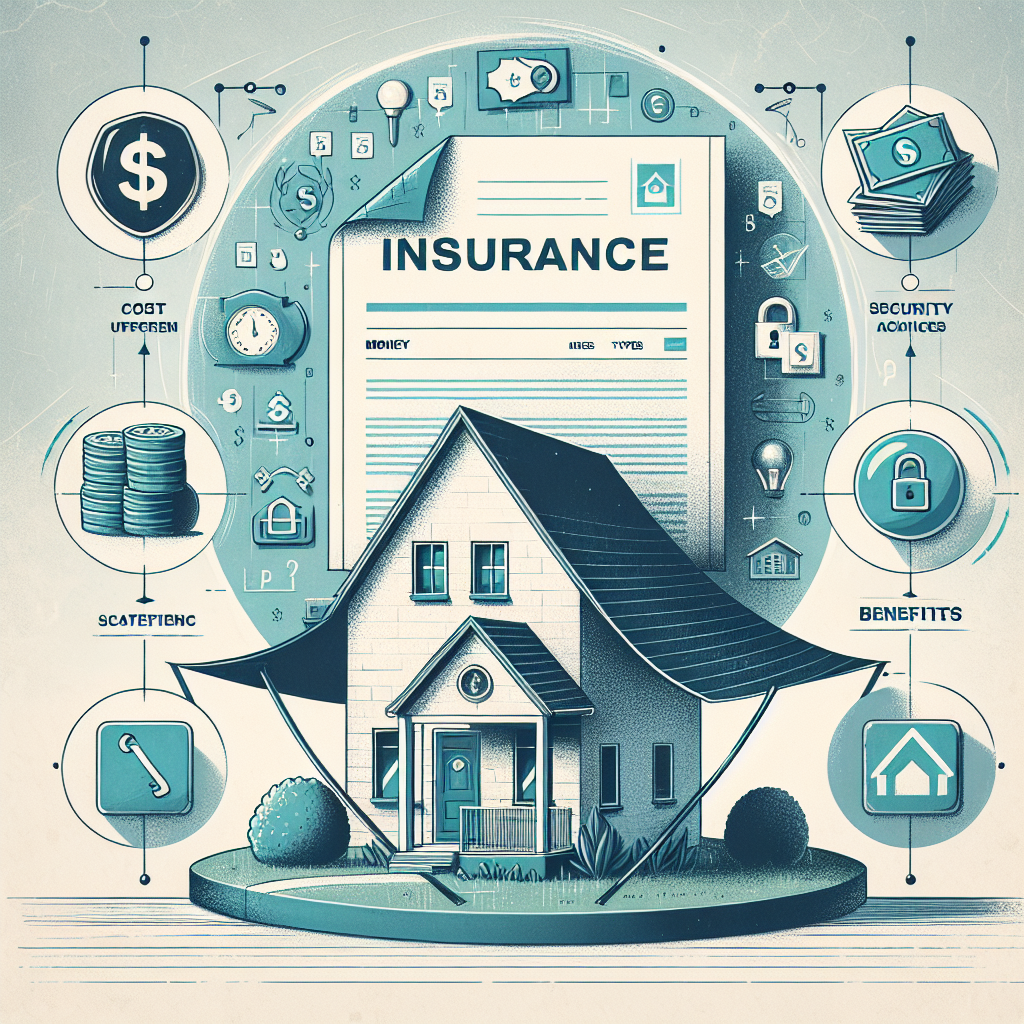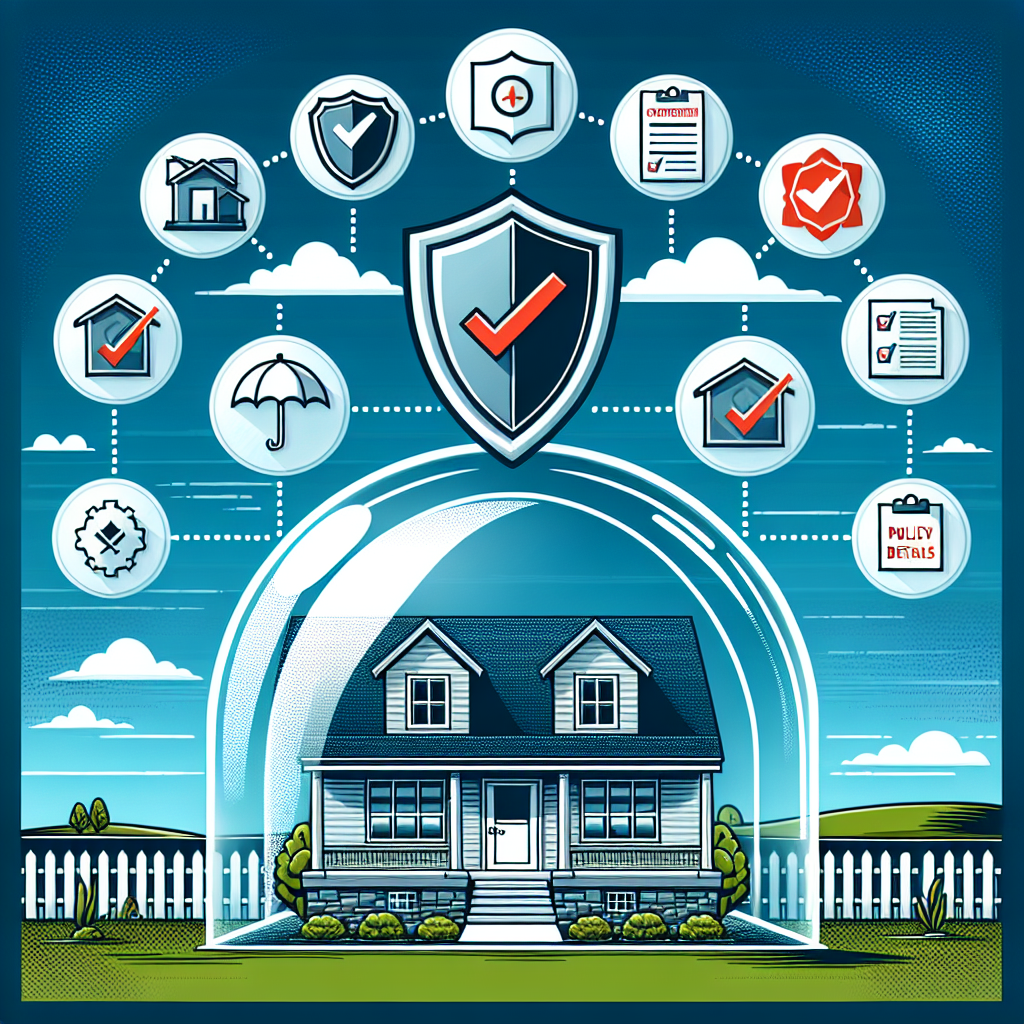Filed under Home Insurance on
Insurance Coverage for Home Loan: Costs, Types, Benefits

Buying a home is one of the biggest financial commitments most people make, and the right safety net ensures that commitment is manageable in good times and bad. That’s where insurance comes in. But there isn’t just one policy tied to your mortgage. Several kinds of coverage intersect with your loan, and each one protects something different. If you’ve ever wondered what you truly need, what it costs, and how to decide, this guide breaks down the essentials of insurance coverage for home loan borrowers with clarity and depth.
What “insurance coverage for home loan” really means
Mortgage-related insurance falls into three broad buckets:
- Insurance that protects you and your family if you die, become disabled, or lose your job (often called mortgage protection insurance or term life coverage tied to the mortgage).
- Insurance that protects the lender if you default (such as private mortgage insurance, or PMI, and government-backed mortgage insurance premiums for FHA loans).
- Insurance that protects the property (homeowners/hazard insurance required by most lenders, plus flood or earthquake insurance in certain areas).
Confusing these can lead to overpaying—or worse, being under-insured. In this article, when we refer to insurance coverage for home loan planning, we focus on the borrower-first protections and how they fit alongside lender-required policies.
Key differences borrowers should know
Mortgage protection vs. PMI vs. homeowners insurance
- Mortgage protection insurance (MPI): Pays the lender if you die (and sometimes if you become disabled or unemployed), typically reducing or paying off the remaining balance. Beneficiary is usually the lender, not your family.
- Term life insurance: A general life policy that pays a lump sum to your chosen beneficiaries, who can use the funds to pay off the mortgage or cover other needs. Often more flexible and cost-effective than MPI for healthy applicants.
- Private mortgage insurance (PMI): Required by many lenders when your down payment is below 20%. PMI protects the lender, not you. It can usually be canceled once you reach 20% equity and must be removed at 78% loan-to-value, according to longstanding federal rules.
- FHA mortgage insurance premium (MIP): Consists of an upfront fee (commonly 1.75%) and an annual premium (often 0.45%–0.85%). Duration depends on down payment and loan term; with under 10% down, MIP generally lasts for the life of the loan.
- Homeowners insurance: Covers damage to the home and liability. Lenders require it as long as you have a mortgage. Average annual costs vary by state and recent weather patterns, with many markets seeing significant increases in the last few years.
Bottom line: PMI and MIP benefit the lender; homeowners insurance protects the property; mortgage protection and term life focus on your household’s financial stability. Understanding these distinctions is central to comparing insurance coverage for home loan needs.
Who needs insurance tied to their mortgage?
For many borrowers, some protections are mandatory (PMI/MIP, homeowners insurance), while others are elective but highly valuable. Consider enhanced insurance coverage for home loan protection if any of the following apply:
- You’re the primary income earner and your household relies on your paycheck to cover the mortgage.
- You lack significant savings—generally less than 6–12 months of expenses.
- You want to ensure your family can keep the home if you pass away or can’t work due to disability or critical illness.
- Your mortgage term is long (20–30 years), increasing the window of risk exposure.
- Your property is in a region prone to natural disasters or rising insurance costs, magnifying budget pressure.
Types of borrower-focused coverage
1) Mortgage protection insurance (MPI)
MPI is often marketed by lenders or mailers right after you close. It’s convenient, may accept people with health conditions, and is tied to your mortgage balance. However, the payout is typically directed to the lender, not your family, and premiums can be higher than term life for healthy borrowers.
2) Decreasing term life insurance
This variant mirrors your declining mortgage balance. Premiums can be competitive, and your beneficiary is your family, offering flexibility beyond mortgage payoff. For some, a standard level term policy is even better value because the death benefit doesn’t shrink as the mortgage declines.
3) Level term life insurance
A popular choice due to affordability and simplicity. You select a term (e.g., 20 or 30 years) and a coverage amount that can clear the mortgage and cover additional needs like childcare, tuition, or debts. Beneficiaries can decide how to use the lump sum.
4) Disability income insurance
Arguably as important as life insurance, disability coverage replaces a portion of your income if illness or injury prevents work. Many borrowers underestimate this risk, even though disability is more statistically common than premature death during working years.
5) Critical illness insurance
Pays a lump sum if you’re diagnosed with covered conditions (e.g., cancer, heart attack, stroke). This can bridge gaps during treatment and recovery, keeping the mortgage current without depleting savings.
6) Involuntary unemployment coverage
More limited and sometimes costly, but useful in volatile labor markets. It can cover a set number of mortgage payments if you lose your job through no fault of your own, typically after a waiting period.
What does it cost? A realistic breakdown
Costs vary widely by age, health, credit, state, coverage amount, and loan details. Here’s a snapshot using typical market ranges:
- Term life insurance: For a healthy 35-year-old non-smoker, a $500,000 20-year term might cost roughly $20–$35 per month; a 30-year term may be $30–$50. Rates rise with age and medical conditions.
- Mortgage protection insurance (MPI): Frequently priced higher than comparable term life. A common ballpark is $0.20–$0.50 per $1,000 of coverage per month. For a $300,000 mortgage, that’s approximately $60–$150 monthly.
- Disability insurance: Often 1%–3% of your annual income for an individual policy (actual premiums depend on occupation, waiting period, and benefit duration).
- Critical illness insurance: Premiums vary by age and coverage amount; $25,000–$50,000 policies can be relatively affordable for younger borrowers.
- PMI: Commonly 0.3%–1.5% of the original loan amount annually, though exact brackets depend on down payment and credit score. For every $100,000 borrowed, that might be roughly $25–$125 per month.
- FHA MIP: Upfront 1.75% of the base loan plus an annual 0.45%–0.85% (billed monthly), with duration rules based on down payment and term.
- Homeowners insurance: Varies by state and risk. Nationally, many owners pay in the $1,200–$2,500 range per year, with some high-risk states seeing higher averages due to severe weather and reinsurance costs.
When evaluating insurance coverage for home loan needs, compare not just the monthly premium but also who benefits, flexibility of payouts, and how long you’ll need the policy.
How insurers set your premium
Expect underwriters to consider:
- Age, health, and smoking status (life and critical illness)
- Occupation and income stability (disability and unemployment coverage)
- Loan balance, term length, interest rate (MPI and decreasing term)
- Home location, construction type, and claims history (homeowners insurance)
- Credit score and down payment size (PMI pricing)
Insurers reward lower risk with better rates. For term life, a quick medical exam and lab work can significantly lower cost compared to no-exam policies, especially for healthy applicants.
Benefits you can actually feel
- Family security: A life or critical illness payout can keep your family in the home and fund other priorities, not just the mortgage.
- Budget stability: Disability and unemployment coverage help avoid missed payments and late fees during income shocks.
- Credit protection: Preventing delinquencies and foreclosure shields your credit profile, preserving future borrowing power.
- Peace of mind: Clarity on worst-case scenarios reduces stress during big financial transitions.
When structured well, insurance coverage for home loan risk creates a coordinated plan rather than a patchwork of policies.
Potential drawbacks and how to avoid them
- Overlapping coverage: Buying MPI and a robust term life policy may duplicate death benefits. Audit your coverage so each policy has a clear purpose.
- Declining value: Decreasing term benefits shrink over time. If you want stable protection, consider level term instead.
- Cost creep: Homeowners insurance and flood premiums have risen in many regions. Shop annually and raise deductibles thoughtfully to manage premiums.
- Lender-placed insurance: If your homeowners policy lapses, your lender may force-place coverage that’s typically more expensive and less comprehensive. Always keep your own policy current.
- Policy rigidity: Some MPI policies are not portable if you refinance or move. Prefer coverage you can take with you.
How much coverage do you need?
Use a simple structure to determine an appropriate life insurance amount related to your mortgage:
- Mortgage balance: Start with your current payoff amount.
- Income replacement: Add 5–10 years of your after-tax income, depending on family needs.
- Other debts and major expenses: Include student loans, auto loans, and anticipated education costs.
- Subtract existing assets: Reduce by savings and investments earmarked for emergencies.
This provides a target for a level term policy that covers the mortgage and beyond. If budget is tight, prioritize covering at least the mortgage balance and 2–3 years of expenses to buy your household time to adjust.
Comparing policies: a practical checklist
As you evaluate insurance coverage for home loan protection, use this checklist:
- Purpose: Does the policy protect you (and your family) or the lender?
- Beneficiary: Will your loved ones or your lender receive the benefit?
- Payout structure: Lump sum or monthly payments? Level or decreasing coverage?
- Portability: Can you keep the policy if you refinance, move, or change lenders?
- Exclusions and waiting periods: Especially important for disability and unemployment coverage.
- Conversion or riders: Can you convert term to permanent insurance? Are riders available for critical illness or disability?
- Price stability: Is the premium guaranteed for the term, or can it increase?
Industry trends shaping your decision
- Rising property insurance rates: Severe weather, rebuilding costs, and reinsurance constraints have pushed homeowners premiums higher in multiple states. Budget for increases at renewal.
- Stricter underwriting in high-risk regions: Insurers may limit new policies or adjust deductibles and exclusions in areas prone to wildfire, hurricanes, or flooding.
- Digital underwriting for life insurance: Accelerated underwriting and no-exam policies have improved speed. Healthy applicants still often get the best rates with a brief exam.
- PMI flexibility: With home price appreciation, some borrowers can remove PMI earlier by proving updated home value and reaching an effective 20% equity faster than scheduled.
Expert-leaning guidance: what professionals often recommend
Financial planners frequently suggest prioritizing flexible, cost-effective solutions. For many families, level term life insurance sized to the mortgage plus a cushion for living expenses offers strong value. Disability coverage is a close second, because the most common threat to making payments is loss of income during illness or injury—not premature death. MPI can make sense for borrowers who find it difficult to qualify for medically underwritten policies. Regardless, reviewing coverage annually—especially after refinancing, salary changes, or the birth of a child—keeps protection aligned with your life.
Sample scenarios
Scenario 1: Young family with a 30-year mortgage
A 32-year-old couple buys a $400,000 home with 10% down. They carry PMI, homeowners insurance, and consider MPI. After comparing, they choose a 30-year, $750,000 level term policy for the primary earner and a smaller policy for the secondary earner, plus long-term disability insurance. Result: Lower cost than MPI, broader protection for childcare and future goals, and PMI will be canceled once they reach 20% equity.
Scenario 2: Mid-career buyer with health considerations
A 45-year-old with a medical history struggles to get competitively priced term life. MPI offers guaranteed acceptance at a higher premium. They choose MPI for a portion of the mortgage and supplement with a smaller term policy they can qualify for. Result: Practical compromise ensuring the loan is covered while maintaining some flexible benefit for the family.
Scenario 3: High-risk region for natural disasters
A homeowner in a coastal state sees homeowners insurance climb 25% at renewal, and flood coverage is now required due to updated maps. They raise their deductible, invest in mitigation (storm shutters, reinforced roofing), and shop multiple carriers. They maintain a robust emergency fund and a term policy rather than MPI. Result: Balanced approach that controls costs and preserves flexible protection.
Common mistakes to avoid
- Assuming PMI protects you: It doesn’t. It protects the lender. Secure separate coverage for your family’s needs.
- Buying coverage you can’t keep: Some policies don’t transfer easily when refinancing. Favor portability.
- Ignoring disability risk: Your mortgage is paid monthly, not in one lump sum. Income protection matters.
- Underinsuring the property: Rebuilding costs have climbed. Ensure your dwelling coverage keeps pace with local construction costs.
- Set-and-forget mindset: As your equity grows and life changes, annually review and adjust your plan.
How to shop effectively
- List your must-haves: e.g., pay off mortgage upon death, replace 60% of income if disabled, keep premiums under a set monthly budget.
- Get multiple quotes: Compare at least three providers for each type—term life, disability, homeowners.
- Check financial strength ratings: Prefer insurers with strong balance sheets and solid claims history.
- Align terms with timelines: If your mortgage is 30 years but you plan to refinance or move in 10–15, consider a 20-year term and reassess later.
- Bundle thoughtfully: Bundling auto and home can reduce premiums, but evaluate total cost and coverage quality.
- Read the fine print: Pay attention to exclusions, waiting periods, and renewal rules.
FAQs about insurance coverage for home loan
Is mortgage protection insurance required?
No. PMI or MIP may be required by the lender, and homeowners insurance is virtually always required. Mortgage protection insurance is optional, though some borrowers find it convenient or easier to qualify for.
Should I pick MPI or term life?
If you’re healthy and can qualify, term life typically provides more coverage per dollar and pays your family directly. If you have significant health issues or prefer a simple, guaranteed-acceptance option tied to the mortgage, MPI can be a practical choice.
Can I cancel PMI?
Yes. You can usually request removal when you reach 20% equity based on the original amortization schedule or by proving a higher current home value, subject to lender rules. By law, PMI must be removed at 78% loan-to-value if your payments are current.
How much homeowners insurance do I need?
Enough to rebuild your home at today’s construction costs, not just the mortgage balance. Work with your insurer to estimate replacement cost and update annually as materials and labor costs change.
What if I refinance?
Review all policies when you refinance. Some borrower-focused policies tied to the original loan may not transfer. Term life and disability policies are usually unaffected and remain in force.
A step-by-step plan to build your protection
- Confirm mandatory coverages: Verify homeowners insurance limits are adequate and compare PMI or MIP costs during loan setup or refinance.
- Choose your life insurance backbone: Price out a level term policy that covers your mortgage and essential living costs.
- Add income protection: Evaluate long-term disability coverage with a benefit that replaces a meaningful portion of your after-tax income.
- Consider specialized riders: Critical illness or waiver-of-premium riders can enhance your safety net at reasonable cost.
- Revisit yearly: Update coverage as your mortgage balance shrinks, income changes, or your family grows.
Putting it all together
The smartest insurance coverage for home loan planning matches your risks, not just your lender’s requirements. For many borrowers, a level term life policy paired with income protection and a well-structured homeowners policy forms a durable foundation. Others, particularly those with health challenges, may find that MPI fills a critical gap despite higher relative costs. Either way, clarity on who is protected, how benefits are paid, and the total cost over time leads to better decisions.
As the insurance market evolves—with property premiums rising in many regions and accelerated underwriting changing how quickly you can get life insurance—staying proactive pays off. Shop around, stack the right protections, and revisit your plan annually. Done well, insurance coverage for home loan risks doesn’t just safeguard a payment schedule; it safeguards the life you’re building inside that home.
Before you finalize anything, gather updated quotes, check each insurer’s reputation, and review the fine print. A couple of hours now can save thousands over the life of your loan—and deliver the confidence that, come what may, your home and family are protected.
If you remember one takeaway, let it be this: insurance coverage for home loan planning is most effective when you prioritize flexible benefits for your family, ensure income protection, and keep lender-required policies lean and optimized. With that approach, you balance cost, coverage, and peace of mind for the long run.
Use this guide as your checklist, and revisit it whenever your mortgage, income, or family situation changes. Those periodic tune-ups make a measurable difference, especially as market conditions shift. With a disciplined approach, insurance coverage for home loan needs becomes a powerful pillar of your financial plan.




